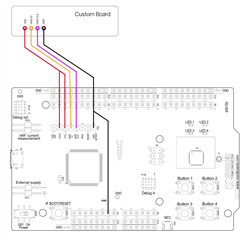Please guide what changes are to be done for the Light bulb example to be run in 52840 Dongle?
I am using VS Code and built the Build Configuration using the Dongle configuration that was available. Since the compilation gave this error, I updated the PWM Driver to the one mentioned in the DTS file.
It build fine and generates the .hex file. However, after loading the hex file in the Dongle using the Programmer V2.0.0 the DFU loading is fine but upon completion it gives the below
The dongle is not corrupted as I again again reset the same and reinstall. I have also loaded my earlier dongle firmware and it runs fine. So the Dongle is fine. Just need to check why is the above error after successful write?



